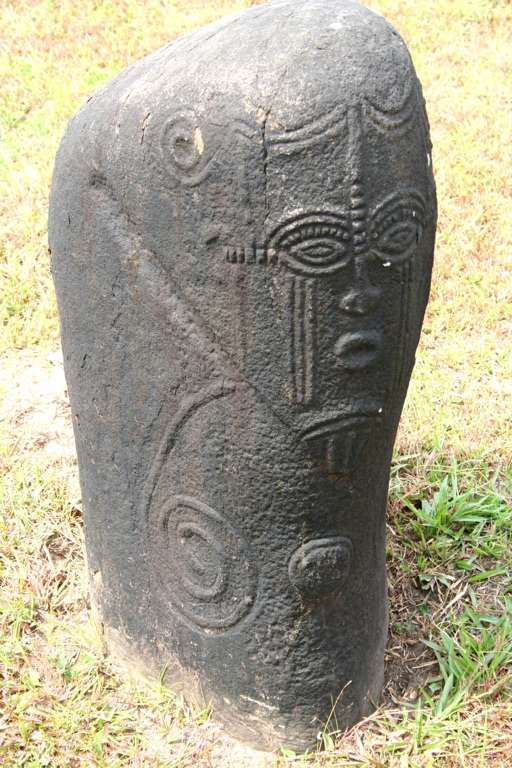The Ikom Monoliths, also known as the Akwanshi or Atal, are a collection of volcanic-stone monoliths located around the town of Ikom in Cross River State, Nigeria. These intriguing artifacts are adorned with intricate carvings and inscriptions believed to be between 1,500 and 2,000 years old. The monoliths vary in height, some reaching up to 2 meters, and are spread across more than 30 sites in the Ikom area. Their purpose and the identity of their creators remain subjects of speculation and research, making them a fascinating topic for historians and archaeologists alike.
Ekoi people
The Ekoi people, also known as Ejagham, are an ethnic group primarily found in southeastern Nigeria and western Cameroon. Their civilization, rich in culture and tradition, has a timeline that stretches back several centuries, with their history deeply intertwined with the dense rainforests and the Cross River region they inhabit. The Ekoi are known for their intricate art, sophisticated social structures, and a deep spiritual belief system that has shaped their identity over the ages.
One of the major moments in Ekoi history is their renowned skill in the art of Nsibidi, an ancient system of graphic communication that predates colonial influence. This form of writing, which consists of symbols and signs, was used for various purposes, including conveying messages, recording agreements, and storytelling. Nsibidi is a testament to the Ekoi’s advanced intellectual culture and their contribution to African knowledge systems.
Religion plays a central role in the life of the Ekoi people. Their belief system is animistic, with a strong emphasis on the worship of ancestors and nature spirits. The Ekoi hold the belief that the spiritual world is deeply connected to the physical, with rituals and ceremonies conducted to honor the ancestors and seek their guidance. The Ekoi also have a unique practice of skin scarification, which is believed to enhance beauty and signify important rites of passage.
Social and daily life among the Ekoi is organized around kinship and communal living. The society is patriarchal, with lineage traced through the male line. Villages are typically composed of extended families living in close-knit compounds. Agriculture is the backbone of their economy, with yams, cassava, and cocoa as the main crops. The Ekoi are also skilled hunters and fishermen, utilizing the rich biodiversity of their environment.
The political structure of the Ekoi people historically consisted of a council of elders and a village head, known as the Ntoon. The Ntoon was responsible for making major decisions, settling disputes, and leading the community in religious rituals. While not kings or queens in the monarchical sense, these leaders wielded significant influence and were revered by the people.
The Ekoi region has seen its share of conflicts, particularly during the colonial era when European powers sought to control the lucrative trade routes and resources of West Africa. The Ekoi, like many other indigenous groups, resisted colonial encroachment, leading to several confrontations. However, detailed records of specific wars and battles involving the Ekoi during these times are sparse, with much of their military history oral and not extensively documented.
The Ekoi people’s origins are believed to be ancient, with some theories suggesting migrations from the north and east into their current locations in Nigeria and Cameroon. Their long history in the Cross River region has made them an integral part of the cultural and ecological fabric of this part of Africa. The dense forests and rivers of their homeland have not only provided sustenance but have also shaped their spiritual beliefs and practices.
Today, the Ekoi people continue to maintain their rich cultural heritage while adapting to the challenges of the modern world. Efforts are being made to preserve their language, art, and traditions in the face of globalization and external influences. The Ekoi’s enduring legacy is a testament to their resilience, creativity, and deep connection to their ancestral lands.

